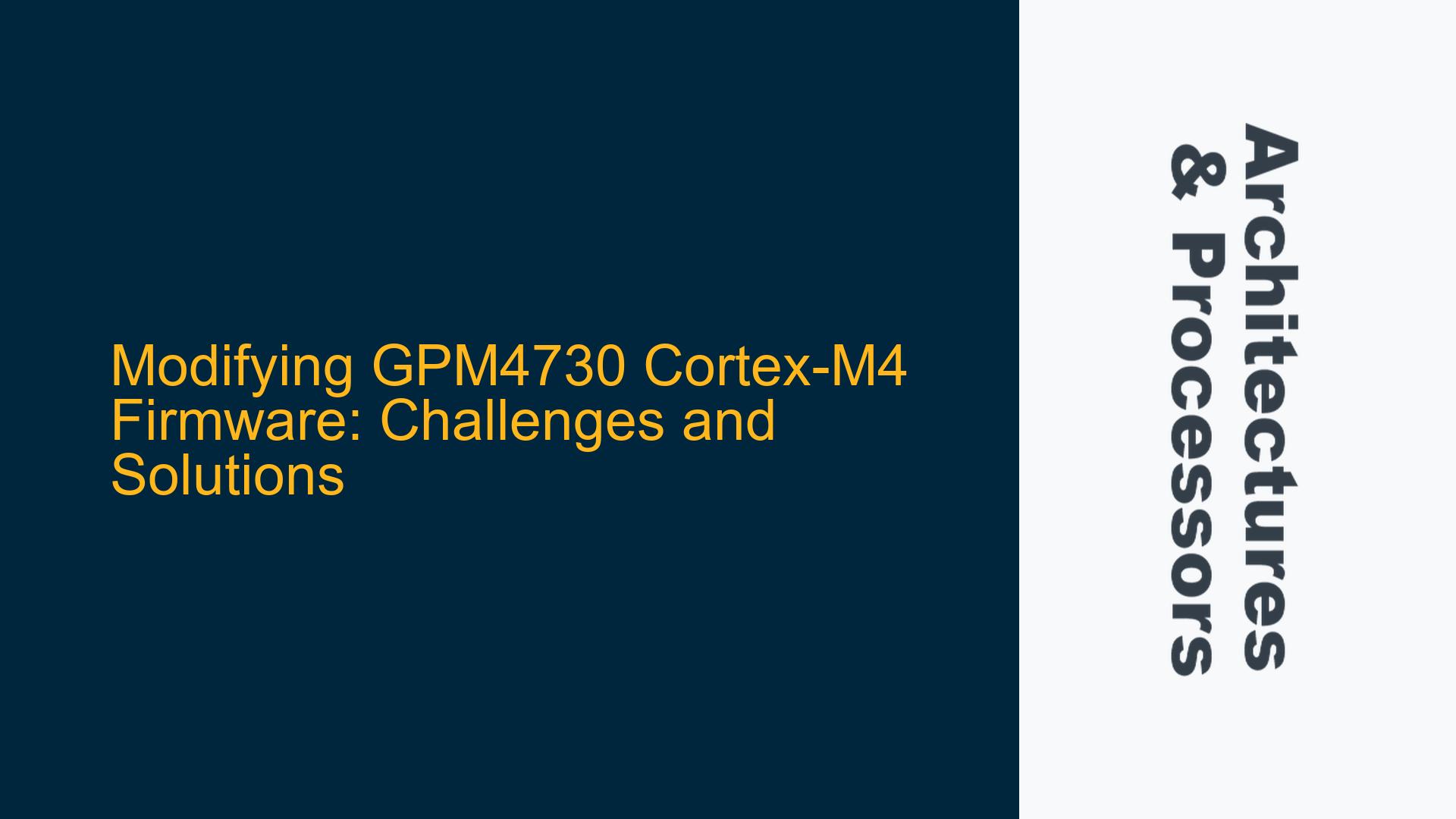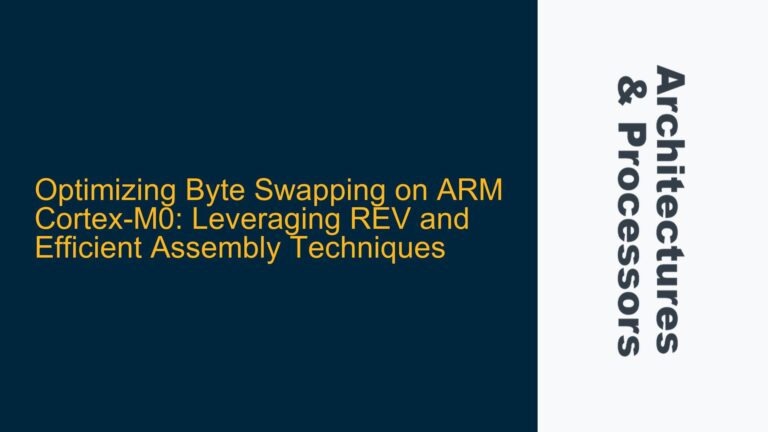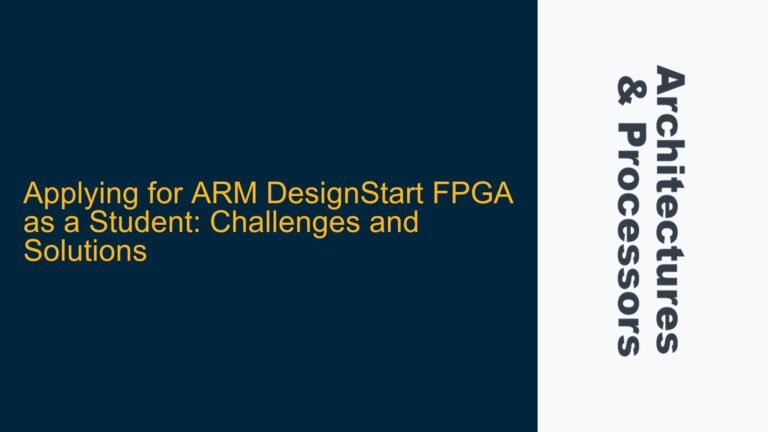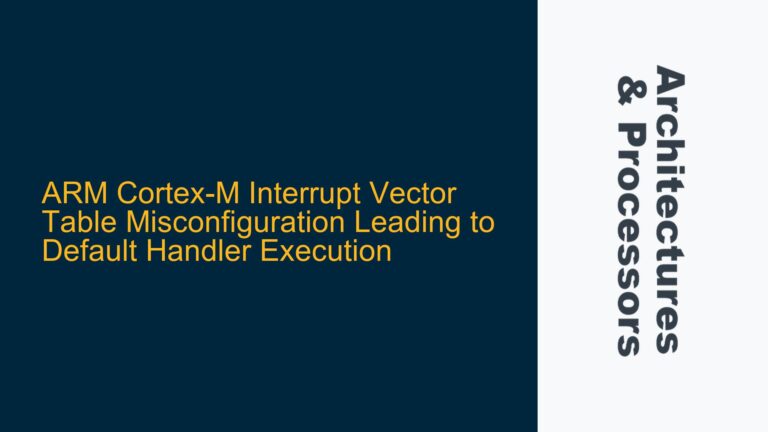GPM4730 Cortex-M4 Firmware Modification Goals and Challenges
The GPM4730 System-on-Chip (SoC) is an ARM Cortex-M4-based microcontroller commonly used in embedded systems, such as the embedded screen mentioned in the discussion. Modifying its firmware to add new functionalities, such as data upload services or altering the display layout, presents several technical challenges. The Cortex-M4 architecture, while powerful for embedded applications, requires a deep understanding of its memory map, peripheral interfaces, and firmware structure to successfully implement modifications.
The primary goal of firmware modification in this context is to extend the functionality of the existing firmware, which involves reverse-engineering the binary, understanding the memory layout, and identifying the relevant sections of code responsible for the display and data handling. The GPM4730 datasheet provides a starting point, but the lack of publicly available source code or detailed documentation for the firmware complicates the process. Additionally, the Cortex-M4’s Harvard architecture, with separate instruction and data buses, introduces complexities when modifying code that interacts with peripherals or memory-mapped registers.
One of the key challenges is identifying the entry points and data structures within the firmware binary. The firmware binary provided is likely a raw image containing both code and data, with no explicit symbols or debugging information. This requires disassembling the binary into ARM Thumb-2 assembly, which is the instruction set used by the Cortex-M4. The Thumb-2 instruction set is a mix of 16-bit and 32-bit instructions, making it more compact than pure 32-bit ARM code but also more challenging to analyze.
Another challenge is ensuring that modifications do not disrupt the existing functionality of the firmware. The Cortex-M4 core in the GPM4730 interacts with various peripherals, such as the display controller, communication interfaces, and timers. Any changes to the firmware must respect the timing and synchronization requirements of these peripherals. For example, modifying the display layout requires understanding how the firmware interacts with the display controller and how pixel data is stored and transferred.
Reverse-Engineering and Analyzing the GPM4730 Firmware Binary
The first step in modifying the GPM4730 firmware is to reverse-engineer the provided binary file. This involves disassembling the binary into ARM Thumb-2 assembly code and analyzing the resulting instructions to identify key functions and data structures. Tools such as Ghidra, IDA Pro, or Radare2 can be used for this purpose. These tools provide disassembly and decompilation capabilities, allowing you to analyze the binary at both the assembly and pseudo-C levels.
When disassembling the binary, it is important to identify the memory map of the GPM4730 SoC. The Cortex-M4 architecture uses a fixed memory map, with specific address ranges reserved for code, data, peripherals, and other regions. The GPM4730 datasheet provides details about the memory map, including the base addresses of peripherals and the memory regions used for code and data. By cross-referencing the disassembled code with the memory map, you can identify which parts of the binary correspond to code, data, and peripheral registers.
One of the key areas to focus on is the vector table, which is located at the beginning of the binary. The vector table contains the initial stack pointer value and the addresses of exception handlers, including the reset handler. The reset handler is the first function executed after a reset and is responsible for initializing the system. By analyzing the reset handler, you can identify the initialization routines for peripherals, memory, and other system components.
Another important aspect of reverse-engineering the firmware is identifying the data structures used by the firmware. These data structures may include configuration settings, display buffers, communication buffers, and other runtime data. By analyzing how these data structures are accessed and modified, you can identify the parts of the code responsible for specific functionalities, such as updating the display or handling communication.
Implementing Firmware Modifications and Ensuring Compatibility
Once the firmware binary has been analyzed and the relevant code and data structures have been identified, the next step is to implement the desired modifications. This involves writing new code or modifying existing code to add new functionalities or change existing ones. When writing new code, it is important to ensure compatibility with the existing firmware and the Cortex-M4 architecture.
One of the key considerations when modifying the firmware is the use of memory and peripherals. The Cortex-M4 architecture has a limited amount of on-chip RAM and flash memory, so any new code must be efficient in its use of memory. Additionally, the new code must respect the timing and synchronization requirements of the peripherals it interacts with. For example, if the new code interacts with the display controller, it must ensure that the display buffer is updated at the correct time to avoid visual artifacts.
Another consideration is the use of interrupts and exception handling. The Cortex-M4 architecture supports nested interrupts and has a flexible exception handling mechanism. When modifying the firmware, it is important to ensure that any new interrupt handlers are properly registered and that they do not interfere with existing interrupt handlers. Additionally, the new code must handle exceptions correctly to avoid system crashes or undefined behavior.
To ensure compatibility and stability, it is recommended to test the modified firmware in a controlled environment before deploying it to the target device. This can be done using a hardware debugger or an emulator that supports the Cortex-M4 architecture. These tools allow you to step through the code, inspect memory and registers, and set breakpoints to verify the behavior of the modified firmware.
In conclusion, modifying the firmware of the GPM4730 Cortex-M4-based SoC requires a combination of reverse-engineering, careful analysis, and meticulous implementation. By understanding the memory map, peripheral interfaces, and firmware structure, and by using the appropriate tools and techniques, it is possible to add new functionalities or modify existing ones while ensuring compatibility and stability.






